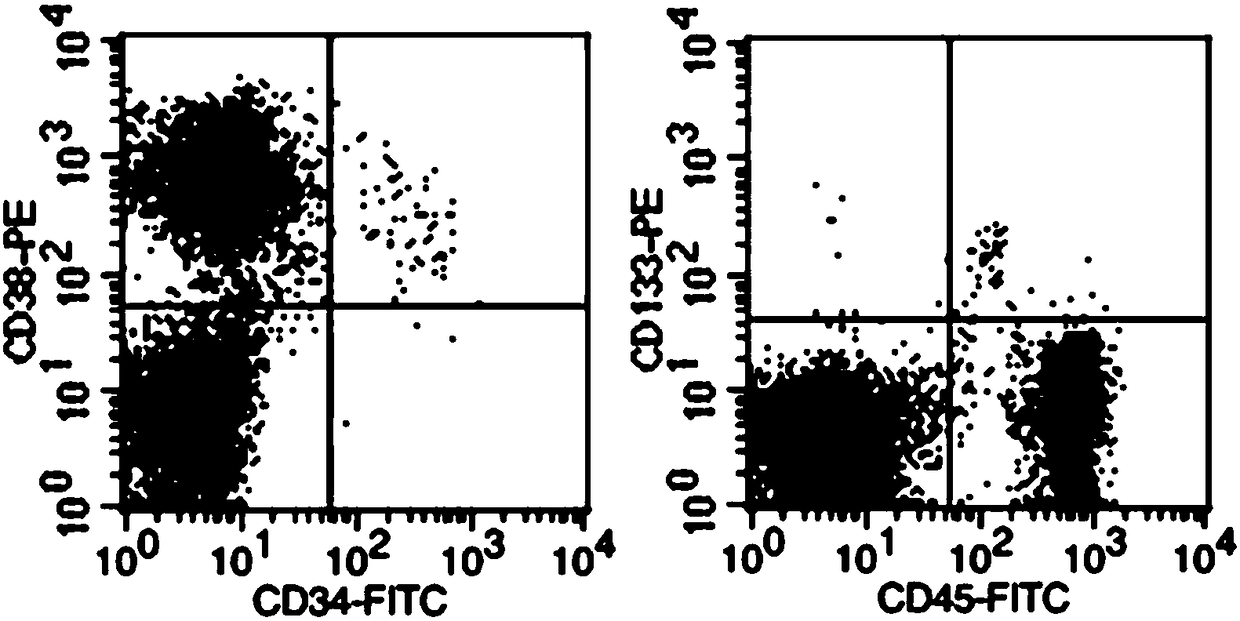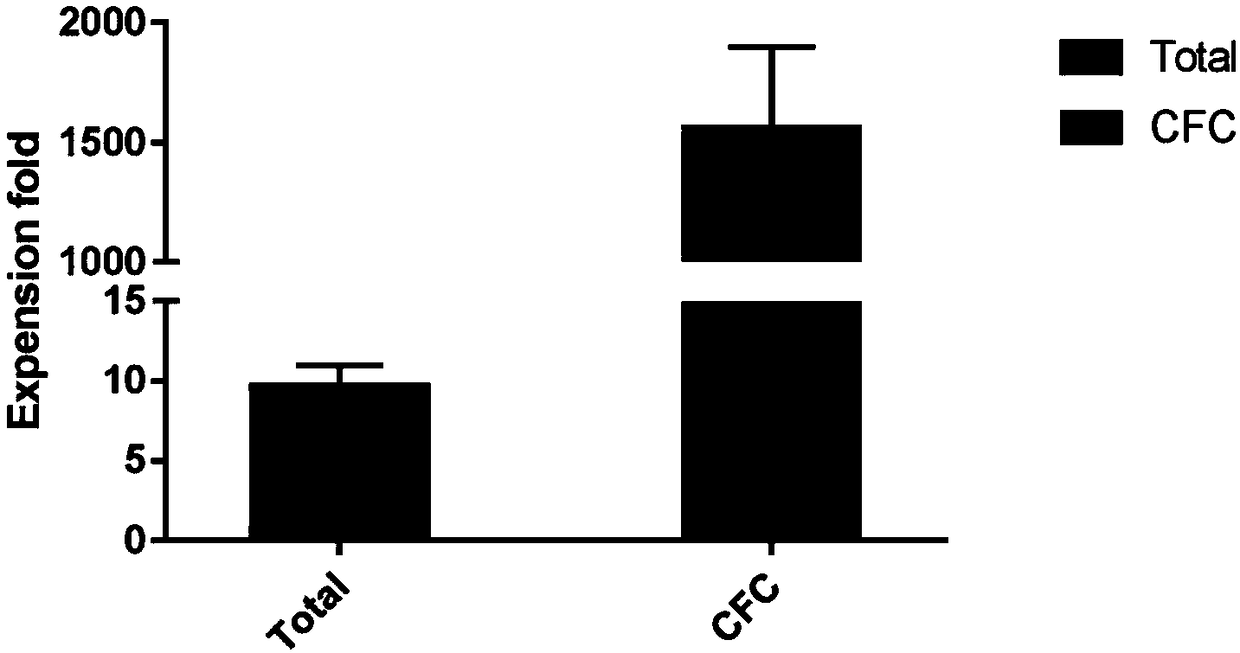Fast separation method for placenta hematopoietic stem cells
A technology of hematopoietic stem cells and separation methods, applied in the field of rapid separation of placental hematopoietic stem cells, can solve the problems of perfusate perfusion difficulties, formation of fibrosis, long time, etc., achieve the effect of enriching the source of stem cells, avoiding the formation of fibrosis, and simple operation
- Summary
- Abstract
- Description
- Claims
- Application Information
AI Technical Summary
Problems solved by technology
Method used
Image
Examples
Embodiment 1
[0031] Example 1: Isolation method of placental HSC
[0032] Take 450-600g placenta of normal delivery under sterile conditions within 4-6 hours after delivery, soak it in PBS buffer, store it at room temperature for 2-6 hours and process it as soon as possible; remove the placenta from the soaked PBS buffer in a biological safety cabinet Take out the solution, place it in another sterile surgical tray, add 800-1000mL of fresh PBS buffer solution to soak it completely, and use surgical scissors to completely cut the placenta leaflet, wash the placenta leaflet fully with PBS buffer solution, and wash out the residual placental leaflet blood, and quickly collect the flushing liquid; filter the flushing liquid with a 200-mesh copper mesh, collect the filtered cell suspension, and add it to multiple 50ml centrifuge tubes, centrifuge at 900g for 10 minutes, pour off the supernatant, and use 10% Volume fetal bovine serum (FBS) in PBS buffer to resuspend the cells; then add the cell ...
Embodiment 2
[0034] Example 2: Cryopreservation of placental HSC
[0035] After counting the isolated and purified hematopoietic stem cells with trypan blue, the 6 The cells were added to 1 ml of cell freezing medium (containing 50% IMEM culture medium, 40% FBS, and 10% dimethyl sulfoxide), and after programmed cooling, they were finally put into liquid nitrogen tubes for freezing.
Embodiment 3
[0036] Example 3: Biological Characterization of Placental HSCs
[0037] 1. Cell Morphological Characteristics
[0038] Through the separation and purification of Example 1, the placental mononuclear cells can be seen as round suspension cells under a microscope ( figure 1 -A), using an inverted high-power microscope to observe hematopoietic stem cells, it can be seen that the cells grow in a typical round suspension ( figure 1 -B).
[0039] 2. Identification of placental HSC surface markers by flow cytometry
PUM
 Login to View More
Login to View More Abstract
Description
Claims
Application Information
 Login to View More
Login to View More - R&D
- Intellectual Property
- Life Sciences
- Materials
- Tech Scout
- Unparalleled Data Quality
- Higher Quality Content
- 60% Fewer Hallucinations
Browse by: Latest US Patents, China's latest patents, Technical Efficacy Thesaurus, Application Domain, Technology Topic, Popular Technical Reports.
© 2025 PatSnap. All rights reserved.Legal|Privacy policy|Modern Slavery Act Transparency Statement|Sitemap|About US| Contact US: help@patsnap.com



